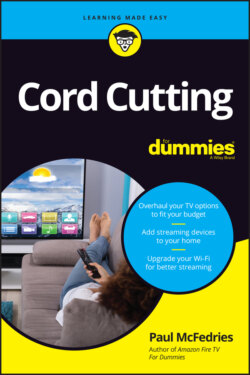Читать книгу Cord Cutting For Dummies - Paul McFedries, Paul McFedries - Страница 36
You unshackle your TV
ОглавлениеA big problem with cable TV is the cable itself. Sure, lots of TV comes to your TV via Wi-Fi these days, but many people still have a cable outlet on one wall and a coaxial cable running from that outlet to a set-top box, which then connects to your TV. This setup is fine as long as you're okay with having your TV (and therefore the rest of your entertainment center) relatively close to the cable outlet.
However, what if one day you decide that your TV-watching experience would be much better if you could move your TV to the opposite side of the room? Well, sure, you could do that, but it means buying a really long coaxial cable and stringing it along the base of your walls to the new TV location. That's ugly with a capital “Ugh.”
And if you decide your TV should be on a different floor? Ah, now you're looking at the expense of bringing in a cable technician to move the outlet.
Cutting the cord, by contrast, means literally doing away with that freedom-restricting coaxial cable. With your content now coming in over the Internet and broadcast to your smart TV or your streaming device via Wi-Fi, moving your TV to the perfect location is easy.
The big assumption behind this benefit is that you're not getting at least part of your TV fix using an over-the-air antenna, which still requires a coaxial cable connection to your TV.
